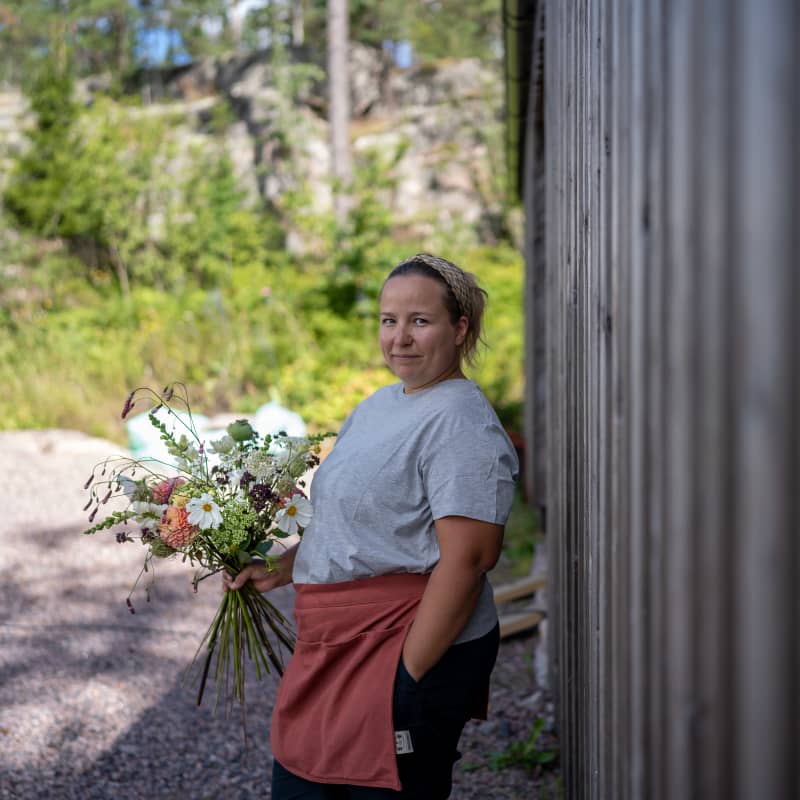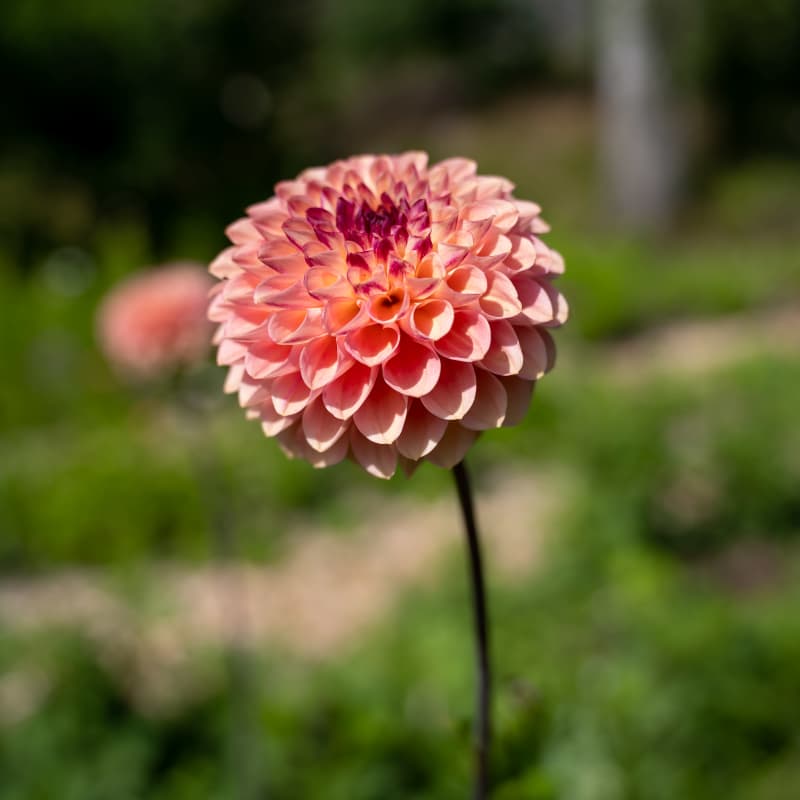Challenging growing conditions in Finland are forcing open-field farmers to think in new ways. Can the native wildflower compete with the fast-growing imported flower?
If you buy a bouquet at the market, the flowers have probably been brought to Finland from the Netherlands. Cut flowers are also grown in Finland, but only a few.
Most of the cut flowers in Finland are grown in greenhouses. Now a phenomenon called the slow flower is making inroads. The key idea is that flowers are grown close by, in the open air, in a way that respects nature and is sustainable.
-Aviculture is blood, sweat and muddy clothes. Often you don’t even have time to admire the flowers, because they are collected for sale while they are still in bud.
Only a fraction of the 25 000 tulips survived
According to the slow flowers ideology originating from the United States, no growth regulators, pesticides or artificial fertilizers are used in the growth.
Since the flowers follow the rhythm of nature, they are ready for picking at a slightly different time each year. According to the farmers, the advantages of slow Flowers for consumers are seen as a more ecological and ethical product compared to flowers grown in greenhouses and imported flowers.
Hundreds of different varieties of flowers have grown at Mononen’s flower farm for four years. No summer has been a copy of another in the cultivation of flowers.
– For example, in a rainy and warm summer, dahlias can grow to sellable condition already in June. In a cold or scorching hot summer, dahlias may not be ready for collection until August, says Mononen.
Some years bring with them big adversities. Last year, Mononen planted 25,000 tulip bulbs, of which only a fraction survived due to an exceptionally wet and cold winter and a long cold spring.
From garden experiment to business?
Mononen wants to follow the slow flower ideology, even though it is laborious and unpredictable. He hopes that consumers would see the same value in hand-grown flowers as they do in artisan bread and understand the environmental harm of imported flowers.
Mononen is originally an accountant and cultural producer. With his current job, he wants to create a business from which he can make a living.
– It means new types of cooperation patterns and the continuous emergence of slow Flower.

The European Flower Centre thrives on networking
Domestic flower shops and supermarkets strive to make use of domestic cut flowers. For example, a third of the flowers sold at Kesko are domestic cut flowers grown in a greenhouse, and the rest are from the Netherlands, Denmark, Kenya and Germany.
The Netherlands has long been the leading trading country for cut flowers. A total of 3.9 million kilos of cut flowers were imported from the Netherlands to Finland last year. Most of these products were cut roses and rose buds.
It means close cooperation between farmers, processors and marketers. The country is also a pioneer in greenhouse technology. Most cut flower production in the Netherlands takes place in greenhouses.
You can find artisan flowers in the flea markets
In Finland, there have so far been few domestic small farms delivering to supermarkets and flower shops. The volume needs to be large enough so that the farmer would have at least some compensation, says Mononen.
When selling to florists, the farmer’s challenge is in addition to sales, availability and logistics.
– Currently, it is not financially viable for all farmers to purchase a van. Flowers may be transported to shops for sale, e.g. in connection with grocery shopping, in one’s own car. Many small farms have solved sales by making bouquets bought from the farm.
Low domestic cut flower production means that Finland needs a huge volume from the Netherlands. Thanks to imports, different flowers are available all year round.

Domestic seasonal flower or imported flower?
However, competition with, for example, the Netherlands and Kenya is not impossible in Finland. Domestic open-field farmers can gain a foothold in the market, but that requires a change of attitude among consumers as well.
Sannaliina Mononen from Mononen’s cutting farm reminds us that an open field farmer can be successful by branding his products and pricing them correctly. In addition, success requires networking and investment in varieties that are difficult to obtain as imported flowers.
Mononen sees too often that open-field farmers do not value their products sufficiently and sell them at a lower price.
– The farmer’s selling price to a wholesaler or florist should be at least the same as it is for similar Dutch products.
When the selling price of flowers is right, the continuity of the industry is also on a firmer footing.
Mononen would like the customer to buy a domestic open-air flower exactly when it is possible to get it from markets or flower shops.
– Supporting domestic cut flower production is also an environmental act, as the carbon footprint of a foreign flower is significantly larger than a domestic one, not to mention the disadvantages of the extensive use of pesticides or the working conditions.

